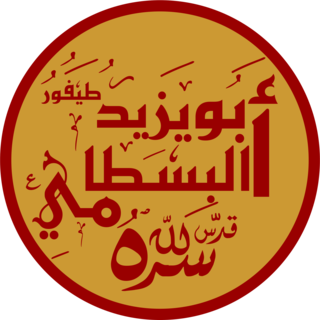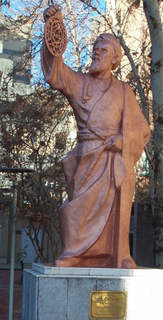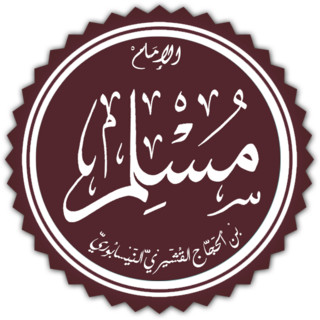 W
WAbdallah ibn Khordadbeh was a Persian general and governor for the Abbasid Caliphate.
 W
WAbdallah ibn Tahir was the Tahirid governor of Khurasan from 828 until his death. He is perhaps the most famous of the Tahirids.
 W
WAhmad ibn Sahl ibn Hashim was an Iranian aristocrat who served the Saffarids and later the Samanids.
 W
WAbu Bakr al-Hassan ibn al-Khasib, also al-Khaseb, Albubather in Latin, was a Persian physician and astrologer of the 9th century.
 W
WAmr ibn al-Layth or Amr-i Laith Saffari was the second ruler of the Saffarid dynasty of Iran from 879 to 901. He was the son of a whitesmith and the younger brother of the dynasty's founder, Ya'qub ibn al-Layth al-Saffar.
 W
WMā Shā’ Allāh ibn Athari was an eighth-century Persian Jewish astrologer, astronomer, and mathematician. Originally from Khorasan he lived in Basra during the reigns of al-Manṣūr and al-Ma’mūn, and was among those who introduced astrology and astronomy to Baghdād in the late 8th and early 9th century. The bibliographer al-Nadim in his Fihrist, described him "as virtuous and in his time a leader in the science of jurisprudence, i.e. the science of judgments of the stars". He served as a court astrologer for the Abbasid caliphate, and wrote numerous works on astrology in Arabic. Some Latin translations survive.
 W
WAzkajwar-Abdallah was the Afrighid king of Khwarazm from the late 8th-century till the early 9th-century. The precise date of his regnal period is uncertain. He ascended as king after 762, but not later than 783 or 787. He was the grandson of his predecessor Sawashfan. Azkajwar-Abdallah is notable for converting to Islam, taking the Muslim name of Abdallah. He was also the last Afrighid king to have coins minted in pre-Islamic style. The latest discovered coin of Azkajwar-Abdallah cites his overlord the Tahirid dynast Tahir ibn Husayn, who governed Khurasan on behalf of the Abbasid Caliphate in 821–822. Azkajwar-Abdallah was succeeded by Mansur.
 W
WBābak Khorramdin was one of the main Iranian revolutionary leaders of the Iranian Khorram-Dinān, which was a local freedom movement fighting the Abbasid Caliphate. Khorramdin appears to be a compound analogous to dorustdin "orthodoxy" and Behdin "Good Religion" (Zoroastrianism), and are considered an offshoot of neo-Mazdakism. Babak's Iranianizing rebellion, from its base in Azerbaijan in northwestern Iran, called for a return of the political glories of the Iranian past. The Khorramdin rebellion of Babak spread to the Western and Central parts of Iran and lasted more than twenty years before it was defeated when Babak was betrayed. Babak's uprising showed the continuing strength in Azerbaijan of ancestral Iranian local feelings.
 W
WAbu Ma'shar, Latinized as Albumasar, was an early Persian Muslim astrologer, thought to be the greatest astrologer of the Abbasid court in Baghdad. While he was not a major innovator, his practical manuals for training astrologers profoundly influenced Muslim intellectual history and, through translations, that of western Europe and Byzantium.
 W
WAbū Yazīd Ṭayfūr b. ʿĪsā b. Surūshān al-Bisṭāmī (al-Basṭāmī), commonly known in the Iranian world as Bāyazīd Bisṭāmī, was a Persian Sufi from north-central Iran. Known to future Sufis as Sultān-ul-Ārifīn, Bisṭāmī is considered to be one of the expositors of the state of fanā, the notion of dying in mystical union with Allah. Bastami was famous for "the boldness of his expression of the mystic’s complete absorption into the mysticism." Many ecstatic utterances (shathiyāt) have been attributed to Bisṭāmī, which lead to him being known as the "drunken" or "ecstatic" school of Islamic mysticism. Such utterance may be argued as, Bisṭāmī died with mystical union and the deity is speaking through his tongue. Bisṭāmī also claimed to have ascended through the seven heavens in his dream. His journey, known as the Mi'raj of Bisṭāmī, is clearly patterned on the Mi'raj of the Islamic prophet Muhammad. Bisṭāmī is characterized in three different ways: a free thinking radical, a pious Sufi who is deeply concerned with following the sha'ria and engaging in "devotions beyond the obligatory," and a pious individual who is presented as having a dream similar to the Mi'raj of Muhammed. The Mi'raj of Bisṭāmī seems as if Bisṭāmī is going through a self journey; as he ascends through each heaven, Bisṭāmī is gaining knowledge in how he communicates with the angels and the number of angels he encounters increases.
 W
WAbu l-Abbas al-Fadl ibn Sahl ibn Zadhanfarukh al-Sarakhsi, titled Dhu 'l-Ri'āsatayn, was a famous Persian vizier of the Abbasid era in Khurasan, who served under Caliph al-Ma'mun. He played a crucial role in the civil war between al-Ma'mun and his brother al-Amin, and was the de facto ruler of the Caliphate until 817.
 W
WAbū al-ʿAbbās Aḥmad ibn Muḥammad ibn Kathīr al-Farghānī, also known as Alfraganus in the West, was an astronomer in the Abbasid court in Baghdad, and one of the most famous astronomers in the 9th century. Al-Farghani composed several works on astronomy and astronomical equipment that were widely distributed in Arabic and Latin and were influential to many scientists. His best known work, Kitāb fī Jawāmiʿ ʿIlm al-Nujūmi, was an extensive summary of Ptolemy's Almagest containing revised experimental data. Among those influenced by al-Farghani's works were Copernicus, who is said to have used al-Farghani’s calculation of the diameter of the Earth in his own calculations, and Christopher Columbus, who used the same calculation for his voyages to America. In addition to making substantial contributions to astronomy, al-Farghani also worked as an engineer, supervising construction projects on rivers in Cairo, Egypt. The lunar crater Alfraganus is named after him.
 W
WAl-Hallaj or Mansour Hallaj was a Persian mystic, poet and teacher of Sufism. He is best known for his saying: "I am the Truth" (Ana'l-Ḥaqq), which many saw as a claim to divinity, while others interpreted it as an instance of annihilation of the ego which allows God to speak through the individual. Al-Hallaj gained a wide following as a preacher before he became implicated in power struggles of the Abbasid court and was executed after a long period of confinement on religious and political charges. Although most of his Sufi contemporaries disapproved of his actions, Hallaj later became a major figure in the Sufi tradition.
 W
WJābir ibn Ḥayyān, known by the kunyas Abū Mūsā or Abū ‘Abd Allāh and the nisbas al-Ṣūfī, al-Azdī, al-Kūfī, or al-Ṭūsī, is the supposed author of an enormous number and variety of works in Arabic often called the Jabirian corpus. The scope of the corpus is vast and diverse covering a wide range of topics, including alchemy, cosmology, numerology, astrology, medicine, magic, mysticism, and philosophy.
 W
WAbū Ibrāhīm Ismā'īl ibn Aḥmad, better known simply as Ismail Samani, and also known as Isma'il ibn Ahmad, was the Samanid amir of Transoxiana (892–907) and Khorasan (900–907). His reign saw the emergence of the Samanids as a powerful force. He was the son of Ahmad ibn Asad and a descendant of Saman Khuda, the eponymous ancestor of the Samanid dynasty who renounced Zoroastrianism and embraced Islam.
 W
WJa'far ibn Yahya Barmaki, Jafar al-Barmaki (767–803) also called Aba-Fadl, was a Persian vizier of the Abbasid caliph Harun al-Rashid, succeeding his father in that position. He was a member of the influential Barmakid family, formerly Buddhist leaders of the Nava Vihara monastery. Along with the rest of the Barmakids, he was executed in 803 at the orders of Harun al-Rashid. It is said that his execution was for allegedly having had an affair with Harun's sister Abbasa, although historical sources remain unclear.
 W
WJavidhan was an Iranian landlord and leader of one of the two Khurramite movements in Azerbaijan, with his headquarters being in Badhdh. The leader of the other Khurramite movement was a certain Abu Imran, who often clashed with Javidhans forces. During one of the clashes, in probably the early 810s, Abu Imran was defeated and killed, whilst Javidhan was mortally wounded, dying three days later. Javidhan was succeeded by his apprentice Babak Khorramdin, who also married Javidhan's widow. Javidhan was survived by a son, who was most likely too young to succeed him.
 W
WMuḥammad ibn Mūsā al-Khwārizmī, Arabized as al-Khwarizmi and formerly Latinized as Algorithmi, was a Persian polymath who produced vastly influential works in mathematics, astronomy, and geography. Around 820 CE he was appointed as the astronomer and head of the library of the House of Wisdom in Baghdad.
 W
WAbū ʻAbdillāh Muḥammad ibn Yazīd Ibn Mājah al-Rabʻī al-Qazwīnī (Arabic: ابو عبد الله محمد بن يزيد بن ماجه الربعي القزويني; commonly known as Ibn Mājah, was a medieval scholar of hadith of Persian origin. He compiled the last of Sunni Islam's six canonical hadith collections, Sunan Ibn Mājah.
 W
WYuhanna ibn Masawaih, , also written Ibn Masawaih, Masawaiyh, and in Latin Janus Damascenus, or Mesue, Masuya, Mesue Major, Msuya, and Mesuë the Elder was a Persian or Assyrian Nestorian Christian physician from the Academy of Gundishapur. According to The Canon of Medicine for Avicenna and 'Uyun al-Anba for the medieval Arabic historian Ibn Abi Usaybi'a, Masawaiyh's father was Assyrian and his mother was Slavic.
 W
WMazyar, was an Iranian prince from the Qarinvand dynasty, who was the ruler (ispahbadh) of the mountainous region of Tabaristan from 825/6 to 839. For his resistance to the Abbasid Caliphate, Mazyar is considered one of the national heroes of Iran by twentieth-century Iranian nationalist historiography. His name means "protected by the yazata of the moon".
 W
WAbu Ja'far Muhammad ibn Ya'qub ibn Ishaq al-Kulayni al-Razi was a Persian Shia hadith collector.
 W
WThe Banū Mūsā brothers, namely Abū Jaʿfar, Muḥammad ibn Mūsā ibn Shākir ; Abū al‐Qāsim, Aḥmad ibn Mūsā ibn Shākir ; and Al-Ḥasan ibn Mūsā ibn Shākir, were three ninth-century unknown pedigree scholars who lived and worked in Baghdad. They are known for their Book of Ingenious Devices on automata and mechanical devices. Another important work of theirs is the Book on the Measurement of Plane and Spherical Figures, a foundational work on geometry that was frequently quoted by both Islamic and European mathematicians.
 W
WAbū al-Ḥusayn ‘Asākir ad-Dīn Muslim ibn al-Ḥajjāj ibn Muslim ibn Ward ibn Kawshādh al-Qushayrī an-Naysābūrī or Muslim Nayshāpūrī, commonly known as Imam Muslim, was an Islamic scholar, particularly known as a muhaddith. His hadith collection, known as Sahih Muslim, is one of the six major hadith collections in Sunni Islam and is regarded as one of the two most authentic (sahih) collections, alongside Sahih al-Bukhari.
 W
WAl-Nasā'ī, full name Abū `Abd ar-Raḥmān Aḥmad ibn Shu`ayb ibn Alī ibn Sīnān al-Nasā'ī,, was a noted collector of hadith, of Persian origin from the city of Nasa, and the author of "As-Sunan", one of the six canonical hadith collections recognized by Sunni Muslims. From his "As-Sunan al-Kubra " he wrote an abridged version, "Al-Mujtaba" or Sunan al-Sughra. Of the fifteen books he is known to have written, six treat the science of hadīth.
 W
WAbū Bakr Muhammad Zakariyyā Rāzī or Rasis; 854–925 CE), was a Persian polymath, physician, alchemist, philosopher, and important figure in the history of medicine. He also wrote on logic, astronomy and grammar.
 W
WAbū 'Abd Allāh Ja'far ibn Muḥammad al-Rūdhakī, better known as Rudaki (رودکی), and also known as "Adam of Poets" (آدمالشعرا), was a Persian poet regarded as the first great literary genius of the Modern Persian language.
 W
WYa'qūb ibn al-Layth al-Saffār, or Ya'qūb-i Layth-i Saffārī, was a Persian coppersmith and the founder of the Saffarid dynasty of Sistan, with its capital at Zaranj. Under his military leadership he conquered much of the eastern portions of the Greater Iran consisting of modern-day Iran, Afghanistan, Turkmenistan, Uzbekistan, Tajikistan as well as portions of western Pakistan and a small part of Iraq. He was succeeded by his brother, Amr ibn al-Layth.
 W
WAl-Tabari was an influential Persian scholar, historian and commentator on the Qur'an from Amol, Tabaristan, who composed all his works in Arabic. Today, he is best known for his expertise in Qur'anic exegesis (tafsir) and Historiography but he has been described as "an impressively prolific polymath. He wrote on such subjects as world history, poetry, lexicography, grammar, ethics, mathematics, and medicine."
 W
WAbu al-Hasan Ali ibn Sahl Rabban al-Tabari, was a Persian Muslim scholar, physician and psychologist, who produced one of the first encyclopedia of medicine entitled Firdous al-Hikmah. Ali ibn Sahl spoke Syriac and Greek, the two sources of the medical tradition of Antiquity which had been lost by medieval Europe, and transcribed in meticulous calligraphy. His famous student Muhammad ibn Zakariya al-Razi has darkened his fame. He wrote the first encyclopedic work on medicine. He lived for over 70 years and interacted with important figures of the time, such as Muslim caliphs, governors, and eminent scholars. Because of his family's religious history, as well as his religious work, al-Tabarī was one of the most controversial scholars. He first discovered that the pulmonary tuberculosis was contagious.
 W
WṬāhir ibn Ḥusayn, also known as Dhul-Yamīnayn, and al-Aʿwar, was an Iranian general and governor during the Abbasid caliphate. Specifically, he served under al-Ma'mun during the Fourth Fitna and led the armies that would defeat al-Amin, making al-Ma'mun the caliph. He was then rewarded as governor of Khorasan, which marked the beginning of the Tahirid dynasty.
 W
WTalha ibn Tahir was the Tahirid governor of Khurasan from 822 until his death.
 W
WYahya ibn Khalid was a member of the powerful Iranian-Assyrian Barmakids family, son of Khalid ibn Barmak. Around 765, he was appointed to Adharbayjan by the Caliph al-Mansur. Yahya's son Fadl ibn Yahya was born at Rayy, at the same time as Caliph al-Mahdi's son Harun. Al-Mahdi entrusted Yahya in 778 with Harun's education.